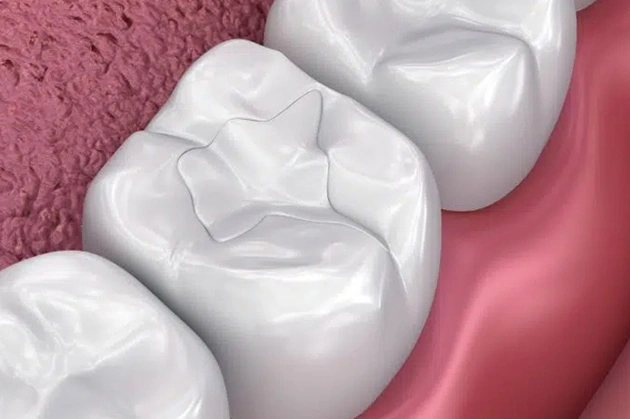We are not a registered Medicare/Medicaid Provider

Dental Fillings: Restoring Tooth Function and Preventing Further Decay
What Can You Tell Me About The Different Kinds Of Fillings I Can Get?
Preventing Cavities: Your Daily Defense
- Regular Dental Checkups: Schedule comprehensive exams and professional cleanings at our office to detect and address potential issues early.
- Effective Brushing and Rinsing: Brush your teeth after every meal and incorporate an antimicrobial mouthwash into your routine to eliminate bacteria.
- Hydration and Dietary Choices: Increase your water intake and reduce consumption of sugary and acidic beverages to protect your tooth enamel.
- Consistent Flossing: Make flossing a nightly habit to remove plaque and debris from between your teeth.
- Avoid Tobacco: Refrain from smoking to safeguard your oral health and overall well-being.
The Dental Filling Process: A Step-by-Step Guide
- Anesthesia (if needed): To ensure your comfort, a local anesthetic will be administered to numb the area surrounding the tooth. For very minor fillings, numbing may not be necessary.
- Decay Removal: Using a dental drill, the dentist will carefully remove the decayed portion of the tooth.
- Tooth Preparation: The dentist may further shape the cavity to create an ideal surface for the filling to adhere to. In some cases, an acid gel will be applied to etch the inner surfaces, enhancing the bond.
- Filling Placement and Hardening: The chosen filling material, such as composite resin, will be placed into the prepared cavity. If resin is used, a specialized curing light will be used to harden it.
- Polishing: Finally, the filled tooth will be polished to achieve a smooth, natural finish that blends seamlessly with your other teeth.
Fillings vs. Inlays/Onlays: Understanding the Differences
- Fillings: These are used to "fill" cavities created by decay or trauma, restoring the tooth's original shape. Composite resin fillings are color-matched to blend seamlessly with your natural teeth, providing an aesthetic and functional repair.
- Inlays/Onlays: These are more substantial restorations, used when a tooth has more damage than a filling can address, but less than what necessitates a full crown. Inlays fit within the cusps of the tooth, while onlays cover the chewing surface.
Composite Resin Fillings: Natural-Looking and Tooth-Friendly Restorations
Composite resin fillings, often referred to as "tooth-colored" or "white" fillings, are a popular and aesthetically pleasing alternative to traditional amalgam fillings. They consist of a durable acrylic resin reinforced with finely powdered glass, creating a strong and natural-looking restoration.
The application process involves layering the composite resin onto the prepared tooth surface and then curing it with a special ultraviolet light. This light triggers a chemical reaction, hardening the material and bonding it securely to the tooth. Notably, composite resin is considered a safe and biocompatible material.
One of the key advantages of composite resin is its ability to be customized to match the precise shade of your surrounding teeth, resulting in a virtually invisible restoration.
Furthermore, the material allows for more conservative tooth preparation, preserving more of your natural tooth structure. This combination of aesthetics and tooth preservation makes composite resin fillings a preferred choice for many patients. Since the resin used in tooth-colored restorations contains fluoride, it can help prevent decay. The resin wears like natural teeth and does not require placement at the gum line, another advantage that reinforces gum health.

